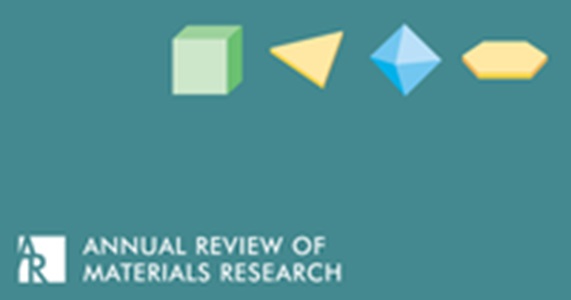Representations of Materials for Machine Learning
IF 10.4
2区 材料科学
Q1 MATERIALS SCIENCE, MULTIDISCIPLINARY
引用次数: 8
Abstract
High-throughput data generation methods and machine learning (ML) algorithms have given rise to a new era of computational materials science by learning the relations between composition, structure, and properties and by exploiting such relations for design. However, to build these connections, materials data must be translated into a numerical form, called a representation, that can be processed by an ML model. Data sets in materials science vary in format (ranging from images to spectra), size, and fidelity. Predictive models vary in scope and properties of interest. Here, we review context-dependent strategies for constructing representations that enable the use of materials as inputs or outputs for ML models. Furthermore, we discuss how modern ML techniques can learn representations from data and transfer chemical and physical information between tasks. Finally, we outline high-impact questions that have not been fully resolved and thus require further investigation. Expected final online publication date for the Annual Review of Materials Research, Volume 53 is July 2023. Please see http://www.annualreviews.org/page/journal/pubdates for revised estimates.机器学习材料的表示
高通量数据生成方法和机器学习(ML)算法通过学习成分、结构和性质之间的关系并利用这种关系进行设计,开创了计算材料科学的新时代。然而,为了建立这些联系,材料数据必须被转换成一种数字形式,称为表示,可以由ML模型处理。材料科学中的数据集在格式(从图像到光谱)、大小和保真度方面各不相同。预测模型的范围和特性各不相同。在这里,我们回顾了用于构建表征的上下文相关策略,这些表征可以使用材料作为ML模型的输入或输出。此外,我们还讨论了现代机器学习技术如何从数据中学习表征,并在任务之间传递化学和物理信息。最后,我们概述了尚未完全解决的高影响问题,因此需要进一步调查。预计《材料研究年度评论》第53卷的最终在线出版日期为2023年7月。修订后的估计数请参阅http://www.annualreviews.org/page/journal/pubdates。
本文章由计算机程序翻译,如有差异,请以英文原文为准。
求助全文
约1分钟内获得全文
求助全文
来源期刊

Annual Review of Materials Research
工程技术-材料科学:综合
CiteScore
17.70
自引率
1.00%
发文量
21
期刊介绍:
The Annual Review of Materials Research, published since 1971, is a journal that covers significant developments in the field of materials research. It includes original methodologies, materials phenomena, material systems, and special keynote topics. The current volume of the journal has been converted from gated to open access through Annual Reviews' Subscribe to Open program, with all articles published under a CC BY license. The journal defines its scope as encompassing significant developments in materials science, including methodologies for studying materials and materials phenomena. It is indexed and abstracted in various databases, such as Scopus, Science Citation Index Expanded, Civil Engineering Abstracts, INSPEC, and Academic Search, among others.
 求助内容:
求助内容: 应助结果提醒方式:
应助结果提醒方式:


